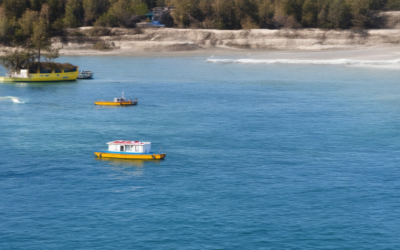For those seeking a deeper connection with the world around them, humanitarian travel offers a unique opportunity to explore new destinations while making a meaningful difference in local communities. By volunteering or working with reputable organizations, travelers can engage in a variety of activities, from teaching and healthcare to conservation and disaster relief, allowing them to develop valuable skills and gain invaluable experiences. Whether you’re looking to break free from the monotony of daily life, pursue a career in humanitarian work, or simply contribute to a cause you care about, humanitarian travel provides a chance to immerse yourself in diverse cultures, challenge your perspectives, and cultivate empathy and understanding.

What is Humanitarian Travel?
As someone who has always been passionate about exploring new cultures and making a positive impact, I’ve discovered the joy of humanitarian travel.
- Humanitarian travel is a type of travel that combines adventure and volunteering, allowing individuals to immerse themselves in local communities and make a meaningful difference in people’s lives.
- This unique approach to travel not only broadens one’s perspective but also fosters empathy, understanding, and a deeper connection with the world around us.
The Benefits of Humanitarian Travel
Engaging in humanitarian travel can have numerous benefits, both personally and globally:
- Cultural Immersion: By living and working alongside locals, travelers gain a deeper understanding of customs, traditions, and ways of life, promoting cross-cultural exchange and appreciation.
- Skill Development: Volunteering opportunities allow individuals to develop valuable skills, such as language proficiency, project management, and teamwork, which can be applied in various aspects of life.
- Personal Growth: Humanitarian travel encourages self-reflection, resilience, and adaptability, helping individuals grow both personally and professionally.
- Global Awareness: By witnessing firsthand the challenges faced by communities worldwide, travelers become more empathetic and informed citizens, better equipped to tackle global issues.
Types of Humanitarian Travel
There are various forms of humanitarian travel, catering to diverse interests and skill sets:
- Volunteer Work: Participate in projects focused on education, healthcare, conservation, or disaster relief, contributing to tangible outcomes and making a lasting impact.
- Cultural Exchange Programs: Engage in homestays, language immersion programs, or community-based initiatives, fostering meaningful connections and mutual understanding between cultures.
- Eco-Tourism: Support sustainable tourism practices, promoting environmental conservation and responsible travel habits that benefit local ecosystems and communities.
Getting Started with Humanitarian Travel
If you’re eager to embark on a humanitarian travel journey, consider the following steps:
- Research: Explore reputable organizations, such as World Vision or Habitat for Humanity , offering humanitarian travel opportunities.
- Plan: Choose a destination, program, and duration that align with your goals and availability.
- Prepare: Acquire necessary visas, vaccinations, and equipment, and familiarize yourself with local customs and safety guidelines.
Join the Humanitarian Travel Community
Connect with like-minded individuals, share experiences, and stay updated on the latest humanitarian travel opportunities through online forums, social media groups, or local meetups.
Humanitarian Trip Costs
The cost of a humanitarian trip can vary greatly depending on several factors, including the length of the trip, destination, and type of project.
-
Global Village Trips
Habitat for Humanity offers Global Village trips, which typically last around 1-2 weeks and include all expenses. The estimated cost for these trips ranges from $1,500 to $2,000 per person.
Habitat for Humanity provides personalized budgets for each participant, taking into account various expenses such as flights, accommodations, meals, and project-related costs.
-
Other Humanitarian Organizations
Other organizations, such as World Vision and CARE , offer humanitarian trips with varying costs. These costs may include project fees, accommodation, food, and transportation expenses.
For example, World Vision’s humanitarian trips often involve a project fee ranging from $500 to $2,000, depending on the location and duration of the trip.
-
Volunteer Fees
Some humanitarian organizations charge volunteer fees, which cover administrative costs, project expenses, and other related costs. These fees can range from $200 to $1,000 or more, depending on the organization and the type of project.
For instance, Global Volunteers charges a volunteer fee of $995 for a 2-week trip, which includes project expenses, accommodations, and meals.
-
Additional Expenses
In addition to the initial trip cost, participants may incur additional expenses, such as flights, vaccinations, and travel insurance. These costs can vary greatly depending on the individual’s circumstances and the destination.
It’s essential to factor in these extra expenses when planning a humanitarian trip to ensure a smooth and enjoyable experience.
When considering a humanitarian trip, it’s crucial to research the organization, understand the costs involved, and plan accordingly. By doing so, individuals can make informed decisions and have a positive impact on the communities they visit.

What Do You Do On A Humanitarian Trip?
As a humanitarian worker, I have had the privilege of participating in various trips around the world, providing essential assistance and support to communities in need.
- Assessing Needs
- Providing Essential Services
- Supporting Local Communities
- Documenting Progress
I begin by assessing the needs of the community, working closely with local organizations and stakeholders to identify areas of greatest need.
Once the needs are identified, I work to provide essential services such as food, water, shelter, and medical care to those affected.
I also focus on supporting local communities by providing training and capacity-building programs to help them become self-sufficient and resilient in the face of adversity.
In addition to providing aid, I document progress and outcomes to ensure that our efforts are making a meaningful impact and to inform future programming.
Types Of Humanitarian Trips
There are various types of humanitarian trips, including:
- Disaster Response
- Refugee Support
- Community Development
Responding to natural disasters such as earthquakes, hurricanes, and floods, providing emergency relief and support to affected communities.
Working with refugees and displaced persons, providing essential services and support to help them rebuild their lives.
Focusing on long-term community development, working with local partners to implement sustainable projects and initiatives that promote economic growth and social stability.
Getting Involved
If you’re interested in getting involved in humanitarian work, there are several ways to do so:
- Volunteer
- Donate
- Advocate
Volunteer with reputable organizations, such as the Red Cross or Doctors Without Borders, to gain hands-on experience and make a difference in the lives of others.
Consider donating to established humanitarian organizations, which can help fund critical programs and services.
Use your voice to raise awareness about important humanitarian issues and advocate for policies and practices that promote human dignity and well-being.

What is a Humanitarian Ticket?
A humanitarian ticket is a type of discounted airfare offered by airlines and travel companies to support charitable work and volunteer efforts around the world.
- We offer low pricing on humanitarian airfare, making it easier for individuals and organizations to access affordable transportation for their charitable endeavors.
- Our change and cancel policies are flexible, allowing travelers to adjust their plans without incurring excessive fees.
Benefits of Humanitarian Tickets
Humanitarian tickets provide numerous benefits to travelers and charities alike:
- Supports charitable work and volunteer efforts worldwide
- Offers low pricing and flexible change/cancel policies
- Enables individuals and organizations to access affordable transportation for their charitable endeavors
How to Obtain a Humanitarian Ticket
To obtain a humanitarian ticket, simply contact us or visit our website to learn more about our programs and pricing.
- Contact us via phone or email to inquire about our humanitarian ticket options
- Visit our website to learn more about our programs and pricing
Competitors and Alternatives
Other travel companies and airlines may also offer humanitarian ticket options, including:
- Airline websites and large airfare websites
- Other travel companies specializing in humanitarian travel
Please note that these alternatives may have varying pricing and policies, so it’s essential to research and compare options before making a decision.
Why Choose Us?
We pride ourselves on offering competitive pricing, flexible change/cancel policies, and exceptional customer service.
- Low pricing on humanitarian airfare
- Flexible change and cancel policies
- Exceptional customer service
At [Brand Name], we’re committed to supporting charitable work and volunteer efforts worldwide through our humanitarian ticket program.
Humanitarian Travel Defined
As a traveler and volunteer enthusiast, I’ve often wondered what constitutes humanitarian travel.
- Obtaining necessary medical treatment for oneself or a loved one
- Visiting an ailing relative or assisting with an upcoming medical procedure
- Attending a family member’s funeral or visiting a deceased family member’s grave
- Providing aid and support during natural disasters or crises
- Participating in volunteer work or community service projects abroad
These scenarios highlight the importance of humanitarian travel, which involves traveling with the intention of making a positive impact on individuals or communities in need.
Types of Humanitarian Travel
There are several types of humanitarian travel, including:
- Medical Tourism : Traveling to receive medical treatment or care that may not be available locally
- Volunteer Travel : Participating in volunteer work or community service projects abroad
- Disaster Relief Travel : Providing aid and support during natural disasters or crises
- Cultural Exchange Programs : Engaging in cultural exchange programs that promote cross-cultural understanding and education
Benefits of Humanitarian Travel
Humanitarian travel offers numerous benefits, including:
- Personal Growth : Developing empathy, compassion, and cultural understanding through immersive experiences
- Community Impact : Making a positive difference in the lives of individuals or communities in need
- Cultural Exchange : Fostering cross-cultural understanding and education through shared experiences
- Networking Opportunities : Connecting with like-minded individuals and organizations working towards common goals
By embracing humanitarian travel, we can create meaningful connections, foster global understanding, and make a lasting impact on the world around us.

What is a Humanitarian Flight?
A humanitarian flight refers to an aircraft operation that transports people, goods, or services to support disaster relief efforts, medical emergencies, or other crises.
- These flights often involve transporting humanitarian staff, aid workers, and emergency responders to affected areas.
- They may also carry essential supplies, such as food, water, shelter materials, and medical equipment.
- In addition, humanitarian flights can facilitate medical evacuations, repatriations, and other critical transportation needs during crisis situations.
The European Union operates its own humanitarian air service, known as the EU Humanitarian Aid Flight, which supports various humanitarian air operations worldwide.
Other organizations, such as non-governmental organizations (NGOs), international aid agencies, and governments, also utilize humanitarian flights to respond to emergencies and disasters.
When booking a humanitarian flight, passengers typically undergo rigorous screening processes to ensure the safe and efficient transportation of essential personnel and cargo.
Humanitarian flights often operate under strict protocols and guidelines set by regulatory bodies, such as the International Civil Aviation Organization (ICAO).
By leveraging these specialized air services, humanitarian organizations can rapidly deploy resources and personnel to areas of need, saving lives and alleviating suffering.
Key Features of Humanitarian Flights:
- Rapid deployment capabilities
- Specialized cargo handling procedures
- Tight security measures
- Priority access to airports and airspace
- Collaboration with local authorities and emergency responders
Conclusion:
Humanitarian flights play a vital role in responding to global crises, facilitating the delivery of life-saving aid and support to those in need.
Through their rapid deployment capabilities, specialized cargo handling procedures, and tight security measures, humanitarian flights enable organizations to effectively respond to emergencies and disasters.
As the world continues to face complex challenges, the importance of humanitarian flights will only continue to grow, underscoring the need for effective collaboration between governments, NGOs, and the aviation industry to ensure the safe and efficient transportation of people and goods in times of crisis.




0 Comments